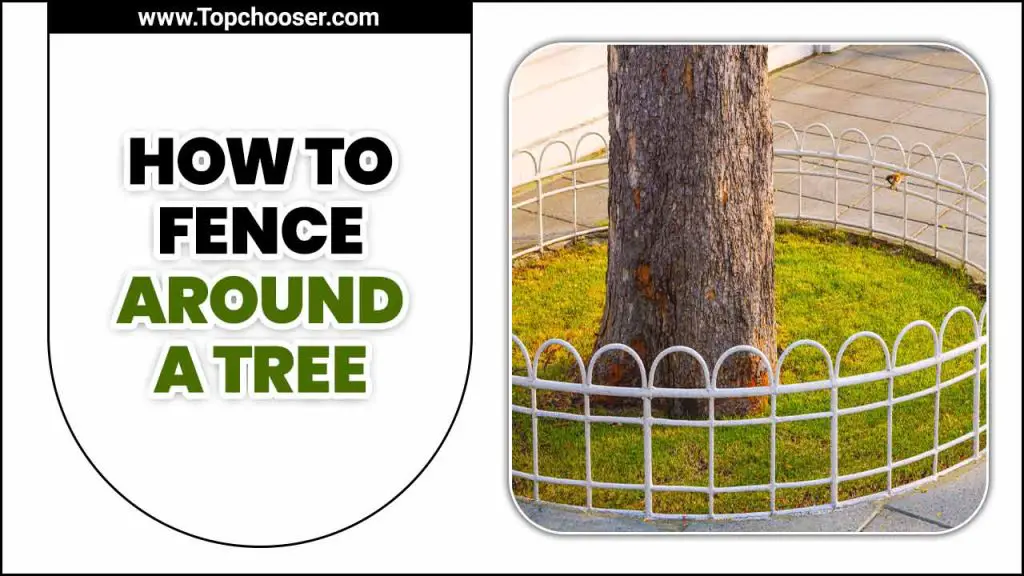Fencing is a common solution for property owners looking to define boundaries and add security to their outdoor space. However, when it comes to fencing around a tree, requires a special approach to ensure the health and longevity of the tree is not compromised.
Trees are valuable assets in any landscape, providing shade, beauty, and environmental benefits. As such, it is essential to properly plan and execute the process of fencing around them.
Here we will discuss the necessary steps and considerations for successfully fencing around a tree. With the proper techniques and knowledge, you can create a functional and aesthetically pleasing fencing solution that will not harm the tree and enhance your outdoor space. So, whether you are a homeowner, landscaper, or fence installer, this comprehensive guide on how to fence around a tree with professionalism and care.
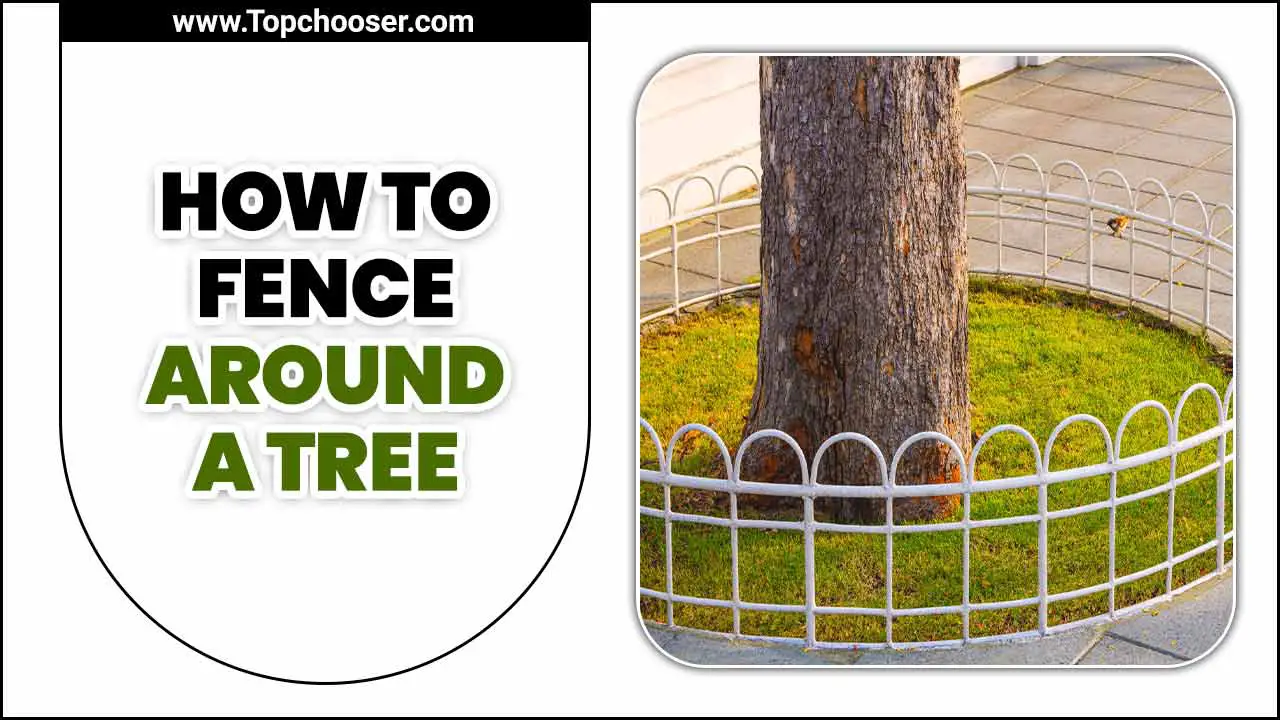
Material You Need
When fencing around a tree, there are a few materials you will need to complete the project. By gathering these materials beforehand, you can ensure that you have everything you need to fence around a tree successfully. Here is a list of the essential materials:
- Fence Panels Or Pickets: These will form the main structure of your fence and can be made from wood, metal, or vinyl.
- Posts: These are necessary for providing support and stability to your fence. Make sure to choose posts that are suitable for outdoor use and can withstand weather conditions.
- Brackets Or Hardware: Depending on the type of fence you choose, you may need brackets or other hardware to attach the fence panels or pickets to the posts.
- Nails Or Screws: These will be used to secure the various components of your fence together. Make sure to choose nails or screws that are appropriate for the material you are working with.
- Gate Hardware (If Applicable): If you fence plan on including a gate in your fence, you will need additional hardware, such as hinges and latches.
How To Fence Around A Tree: Follow The Below Steps
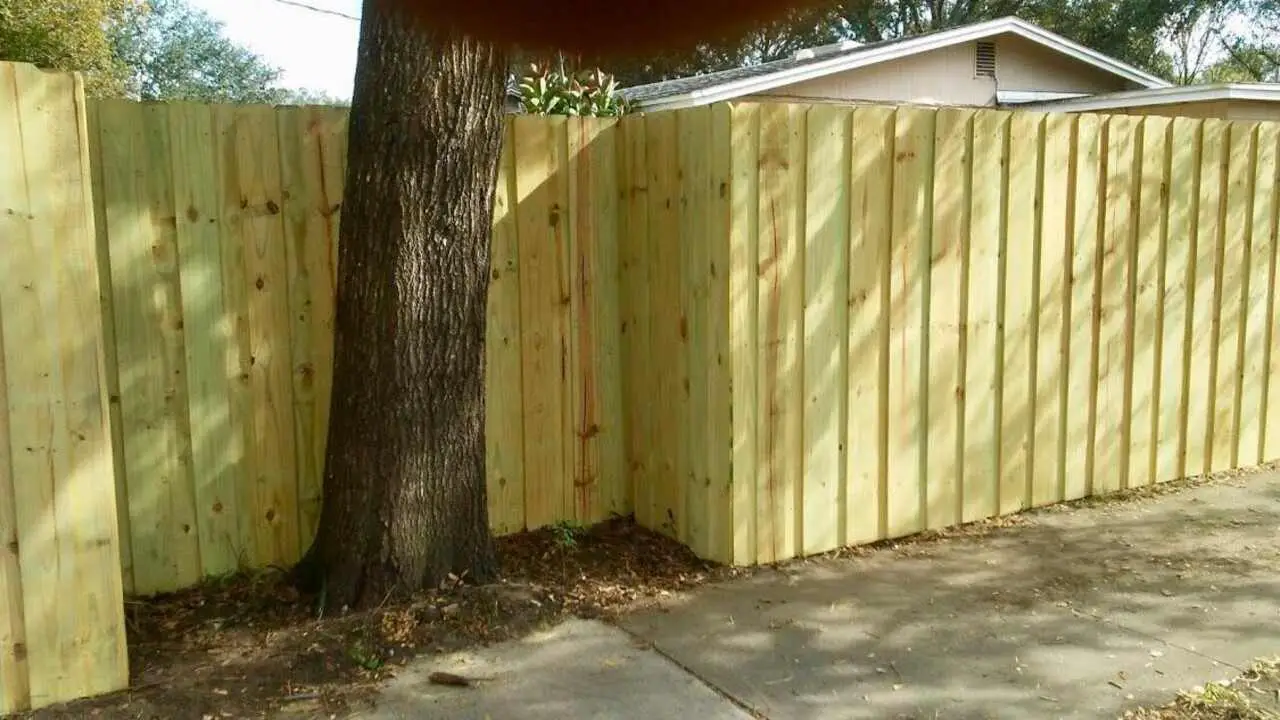
Fencing around a tree can be a beneficial way to protect it from potential damage. Fencing around a tree can be a practical and aesthetically pleasing reasonable solution for protecting the tree and defining its space. Remember, when fencing around a tree, it’s important not to damage the tree’s roots or bark during installation. Take care to avoid placing any stress on the tree while securing the fence posts. Below, we provide in detailed step-by-step process on how to fence around a tree:
Decide The Location Of Your Tree
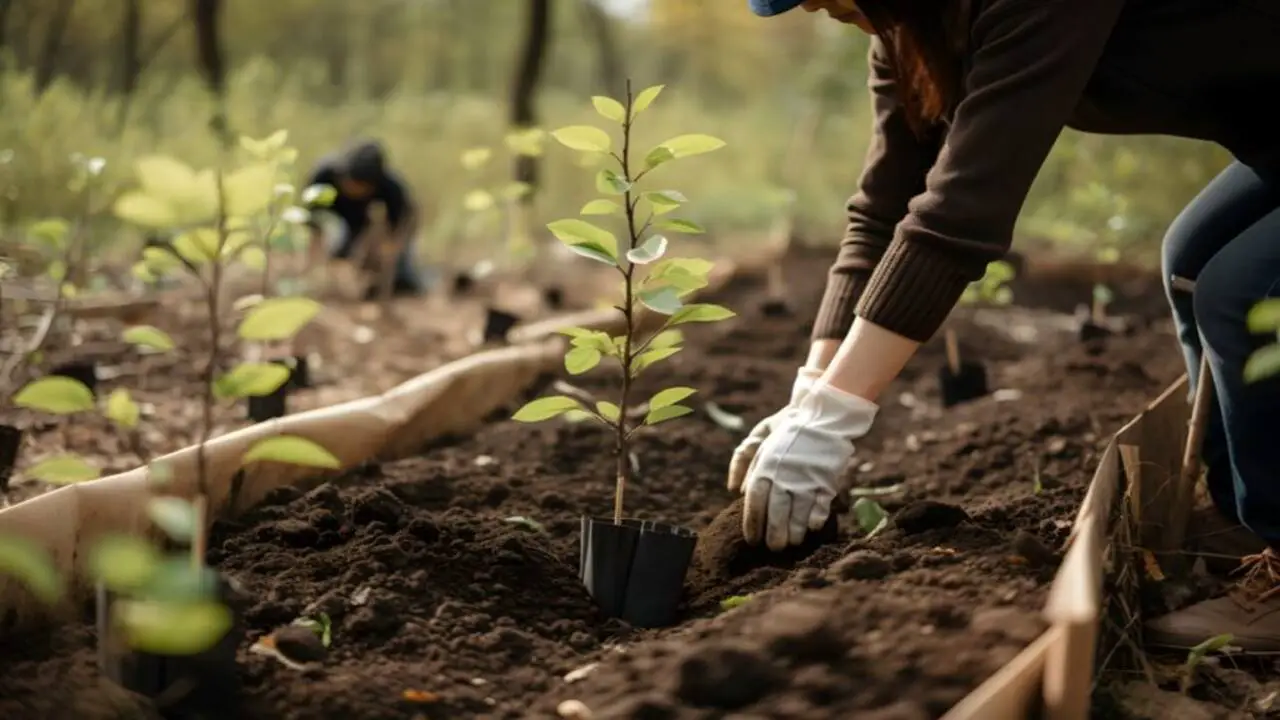
Before you fence around your tree, you must decide where it will be located. You will also need to determine the height and width of the fence and the material you’ll use for the wall. The next step is to mark the bar’s outline on the ground using stakes. The wall should be twice as high as the tree’s canopy.
The last step is to build the fence using various materials, such as wire mesh, wood, or plastic. Remember that the wall should always follow the outline of your tree’s perimeter fence so you can quickly identify it. So, before fencing around your tree, consider its location, size, and shape, and then choose an appropriate creative fence design to fit your needs and budget.
Measure And Mark The Property Boundary And Tree Trunk

When planning to fence around a tree, it is important to start by measuring and marking the property boundary as well as the tree trunk. This will help ensure that your fence is installed in the correct location and does not infringe on neighbouring properties or damage the tree. Use a tape measure to determine the desired distance from the tree trunk to where you want to place your fence posts.
Mark these measurements with stakes or flags to create a clear outline of your fencing area. Remember to leave enough space between the fence and the tree trunk to allow for healthy growth and movement of the tree. Taking these initial steps will help you create a well-planned and visually appealing fence that respects both your property boundaries and the needs of your tree.
Choose The Right Type Of Fence Material
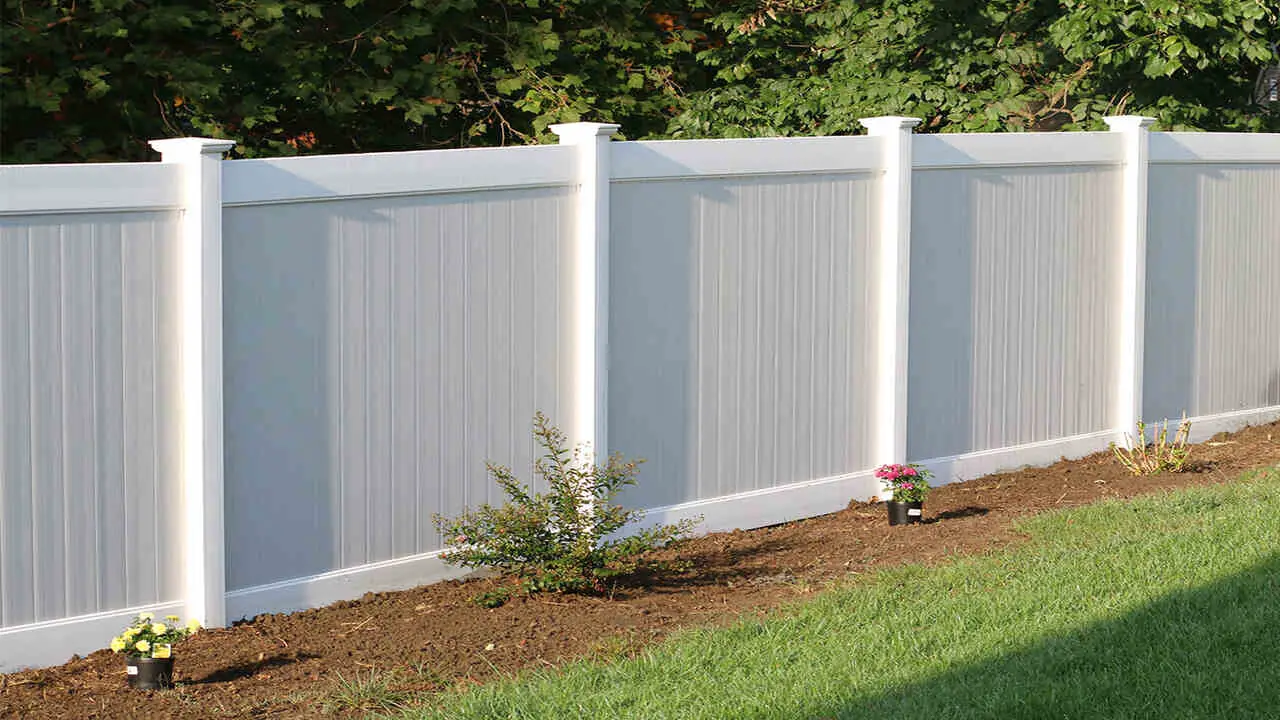
When choosing a fence material to use around a tree, it is important to consider the specific needs and characteristics of the tree. By selecting the right type of fence material, you can ensure that your tree remains healthy and protected while adding a decorative element to your landscape. Here are some factors to keep in mind:
- Avoid materials that can cause damage or restrict future growth, such as wire or chain-link fences.
- Opt for materials that are flexible and allow for movement, such as wood or vinyl.
- Consider the aesthetic appeal of the material and how it will complement the tree and surrounding landscape.
- Take into account the maintenance requirements of the material, including durability and resistance to weathering.
Dig Holes At Least 18 Inches Deep And 8-10 Inches In Diameter
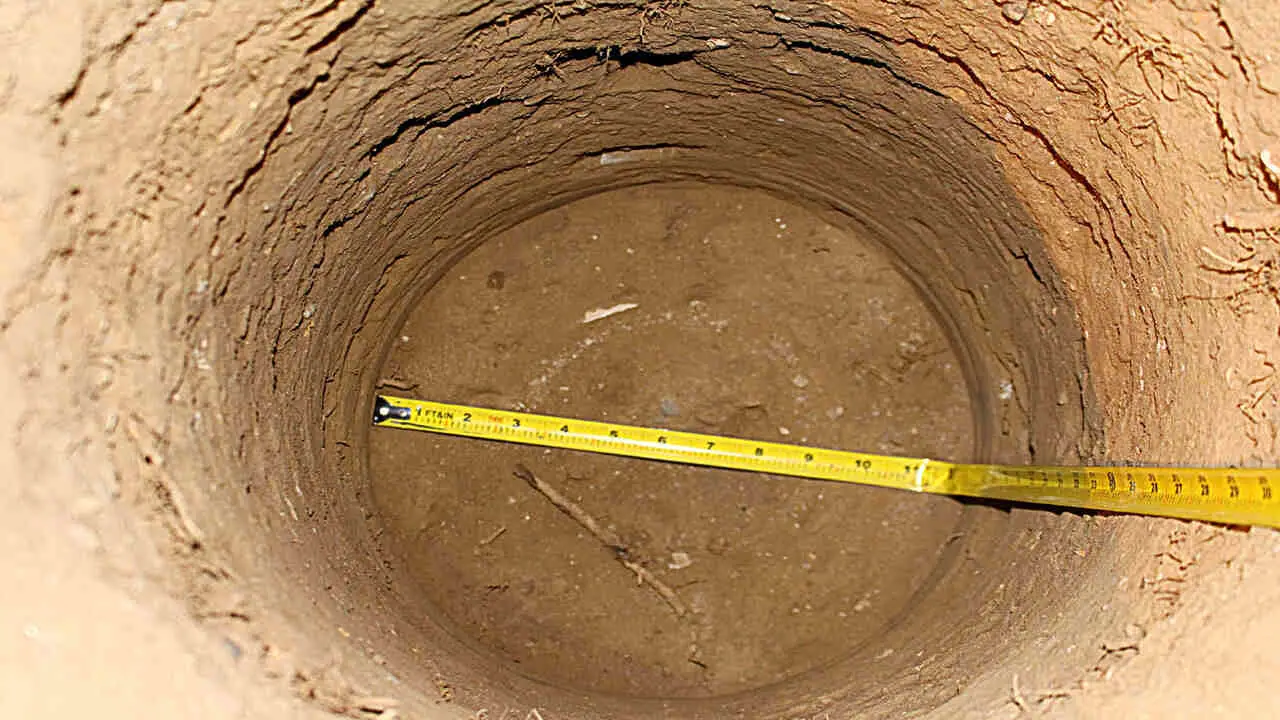
When fencing around a tree, it is important to dig holes that are at least 18 inches deep and 8-10 inches in diameter. This will ensure that the fence posts are securely anchored in the ground and provide stability for the fence.
Digging the holes deep enough will also help to prevent the tree’s roots from being damaged during the installation process. Use a post-hole digger or shovel to carefully excavate the holes, making sure to remove any rocks or debris that may hinder the placement of the fence posts. Once the holes are dug, you can proceed with installing the fence and securing it around the tree.
Mark Out The Boundary Of The Fence Using Stakes And Wire
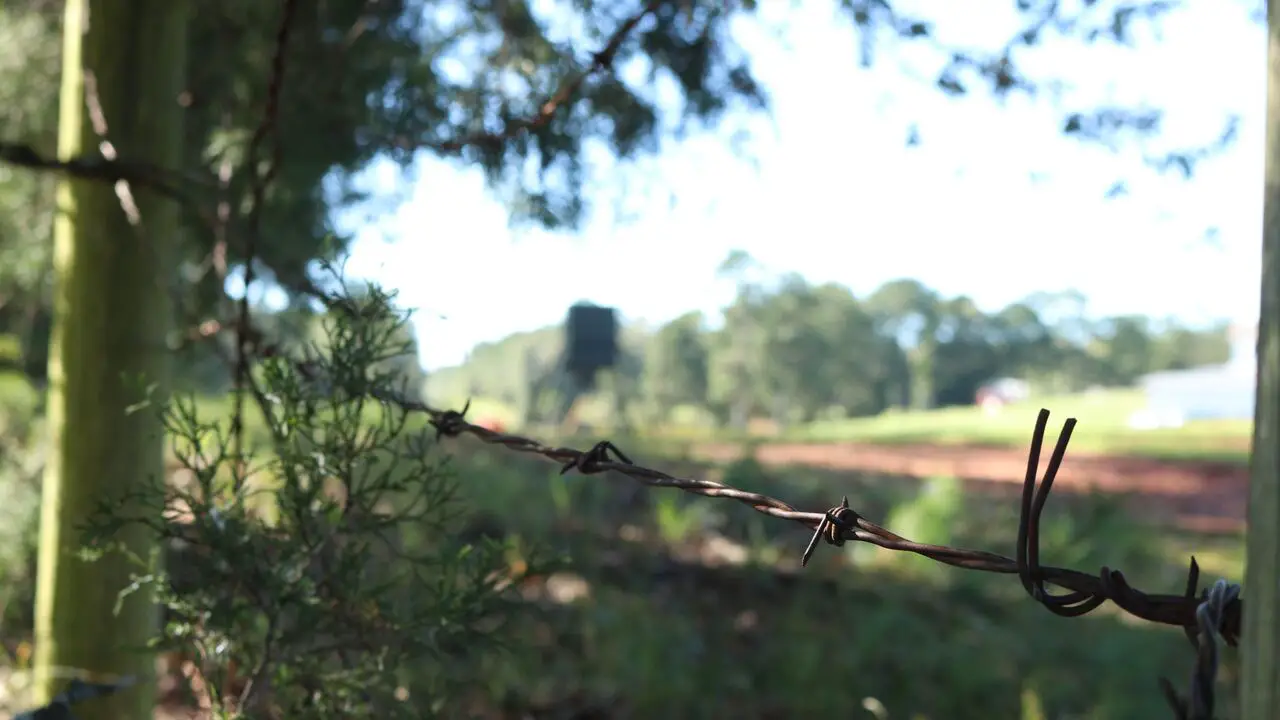
Start by marking the fence’s boundary using stakes and wire to border around a tree. Next, use a string line to help you position the wire tightly around the tree. Ensure that the wire is tight enough not to allow leaves or branches to escape but not so tight that it damages the tree.
Once you surround the tree with the fence, tie the ends of the wire together to create a secure border. This will help protect the tree from harm and ensure its safety and well-being in future years.
Construct Your Fence Using Posts, Wire, Or A Combination Of Both
To fence around a tree, you first need to determine the height and circumference of the tree. You can measure the tree’s height against a ruler or a digital tree scale. Next, you must decide on the fence material that will work best for your situation. Options include chain link, wire, or post and wire fencing.
You can use posts or wire to construct your fence, but it’s often better to use both to avoid damage to the tree and the seats. You should also use the correct hardware when installing your fence, so it is secure and doesn’t cause damage to the tree or pole. Take precautions, such as employing an arborist or professional, to ensure you install your fence safely and follow local regulations.
Secure Your Fence With Stakes And An Appropriate Lock
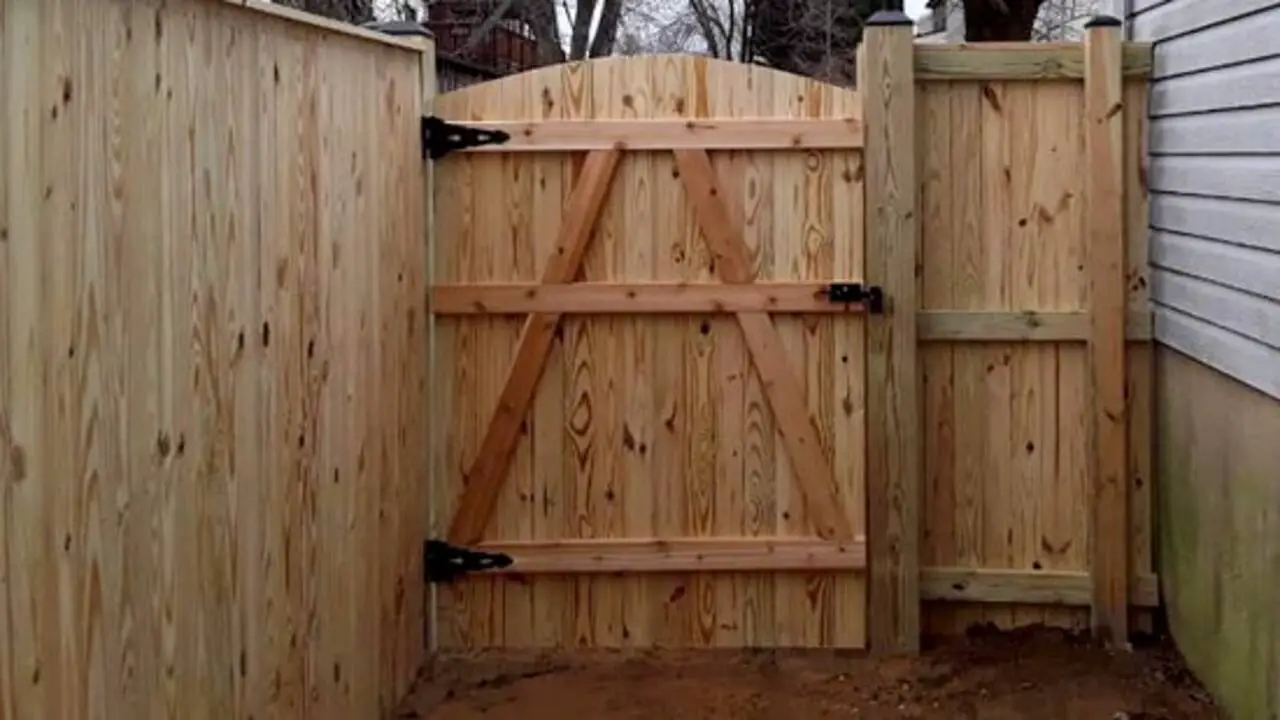
There are a variety of techniques you can use to fence around a tree. The most common option is to stake the fence and attach it to the tree using an appropriate lock. You can also use wire mesh fencing or tree wraps to border around a tree. These systems are easy to set up, affordable, and can be used in various settings.
However, they tend to be less permanent than traditional fences and may require some maintenance. Other options include section fencing or post-and-rail fencing for more visually pleasing results. It all depends on your budget, needs, and aesthetic preferences. It’s essential to consider the type of fence that best suits your needs and the environment in which you will use it.
Check That Your Fence Is Secure By Putting Weight On One Side Of Each Post
It’s vital to ensure the fence is secure around a tree, so check that it’s done by putting weight on one side of each post. You can do this with a weight to ensure the base is sturdy and the fence is installed correctly. If you need to remove or adjust a post, do so gradually and consistently to avoid damage to the tree.
Ensure the seats are at least 3 feet deep from the edge of the property and located in areas where they won’t interfere with traffic or other activities on your property. Fencing around trees protects them from pests and other animals that can harm or even kill them. Fencing around oak trees helps ensure their health and longevity while protecting them from potential harm.
When Is Fencing Around A Tree Necessary?
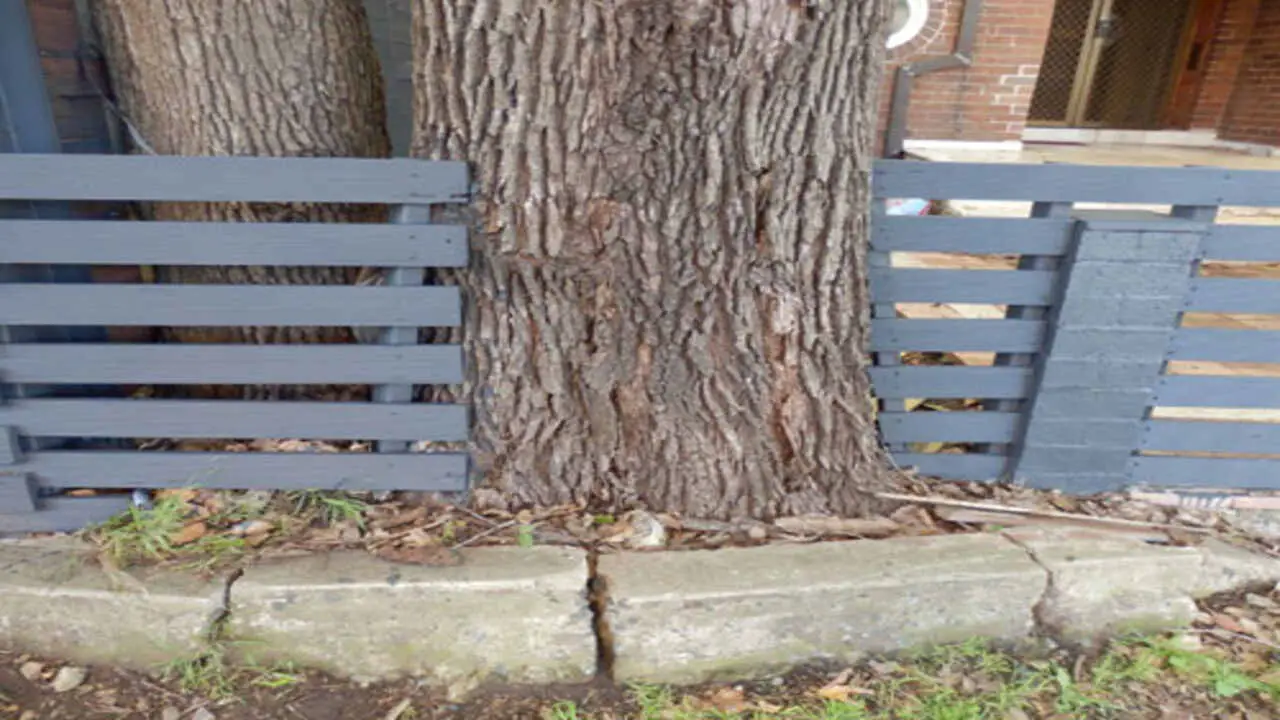
Fencing around a tree is essential for several reasons. To fence around trees successfully, you must consider the tree’s size, shape, and health. It would be best to consider the surrounding environment, such as wind and moisture, and how it might affect your fence installation. When fencing around trees, keep the following things in mind. Different tree species have varying needs for fencing. If you’re planning to fence around a tree, it’s essential to consider the following:
- The type of tree that you’re fencing around. Some trees are too big or heavy to be adequately fenced in, while others are too fragile and might not survive the fence installation.
- The surrounding area. Fencing around a tree in an open space will likely damage the surrounding property, while fencing a tree in a shady or protected area will probably protect it from damage from other sources.
- The purpose of the fence. If the wall is just for aesthetic purposes, signals that prevent animals or people from passing may not be necessary. Ho may never be required; if the fence is intended to protect the tree from harm, you should use more robust materials.
Type Of Fencing
Regarding fencing around a tree, there are several options to consider. Before installing any fence, it’s important to ensure that it doesn’t harm the tree’s roots or hinder its growth. Consider consulting with a professional arborist to determine the best fencing option for your specific tree and landscape. Here are some popular types of fencing that can be handy:
- Picket Fence: A classic choice, picket fences can provide a charming and decorative look around a tree.
- Split Rail Fence: This type of fence comes from up of wooden posts and rails, providing a rustic and natural look.
- Metal Fence: Metal fences, such as wrought iron or aluminum, can offer durability and a more modern aesthetic.
- Wire Mesh Fence: If you’re looking for a more practical option, wire mesh fences can be an effective way to protect the tree from wildlife or pets.
Conclusion
The sight of a fence around a tree may seem peculiar to some people. However, there are valid reasons why one should consider fencing around a tree. This helps to preserve the integrity and health of the tree. Moreover, a fence around a tree can be an aesthetically pleasing addition to your landscape. Fencing can help accentuate the tree’s beauty and create a focal point in your yard.
By following the basics of how to fence around a tree, you can protect the tree from accidental damage, prevent animals from chewing the bark or digging around the base, and allow the tree to thrive in a safe and secure environment. With a little effort and care, you can ensure the longevity of your tree and enjoy its beauty for years to come.
Frequently Asked Questions
Can You Put A Fence Around The Trees?
Yes, you can fence around trees. A few different types of fences can be handy for this purpose, including an electric fence. An electric fence is the most common type popular for fencing around trees. Other barriers include wooden fences, wrought iron, and chain link fences.
Can You Build A Fence Around Trees?
Yes, it is possible to build a fence around trees. However, it is important to consider certain factors, such as the size of the tree and the type of fence being installed. Care should be taken not to damage the tree's roots or trunk during the fence construction process.
Will A Tree Grow Around A Fence?
Yes, a tree can grow around a fence. As a tree grows, its roots and trunk can expand and push against nearby objects, including fences. Over time, the tree's growth can cause the fence to become embedded within the tree's woody tissue.
Is Vinyl The Polyester Of Fencing?
No, vinyl is not the polyester of fencing. While both vinyl and polyester are synthetic materials, they have different characteristics and uses. Vinyl is commonly famous for fencing due to its durability, low maintenance, and resistance to weather conditions.
Is It Possible To Build A House Around A Tree?
No, vinyl is not the polyester of fencing. While both vinyl and polyester are synthetic materials, they have different characteristics and uses. Vinyl is commonly used for fencing due to its durability, low maintenance, and resistance to weather conditions.

I am passionate about home engineering. I specialize in designing, installing, and maintaining heating, ventilation, and air conditioning systems. My goal is to help people stay comfortable in their homes all year long.
